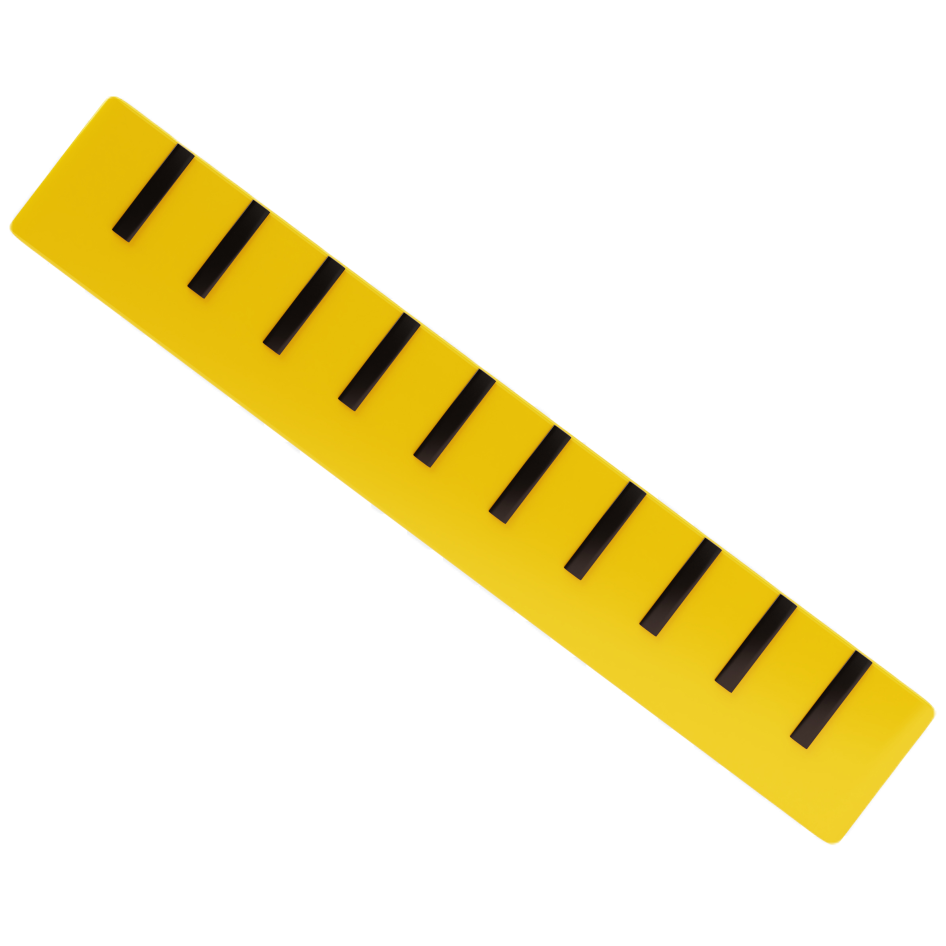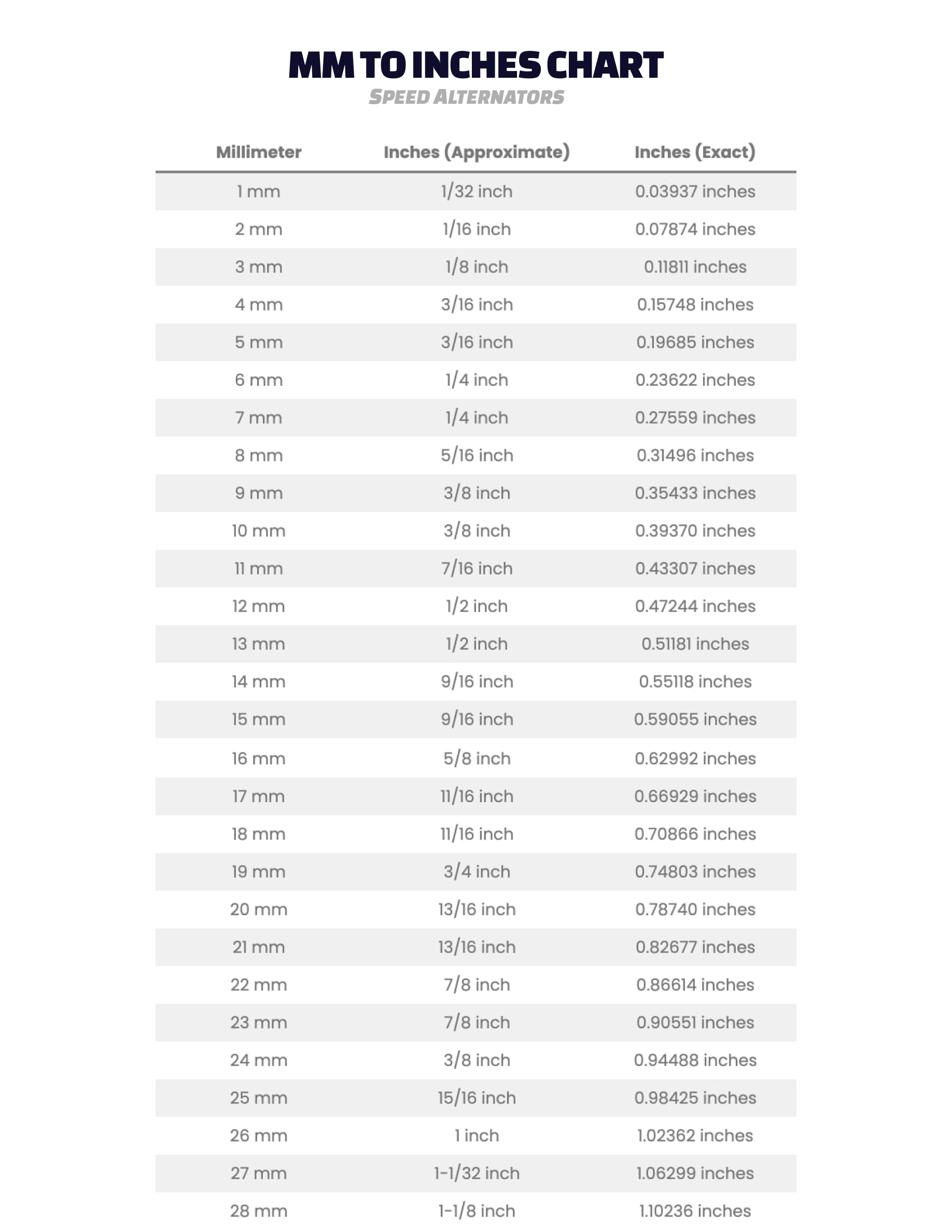Transforming 20 millimeters into inches is a routine task for many individuals across various fields, including engineering, construction, and everyday activities. The ability to convert millimeters to inches accurately is indispensable for numerous applications, ranging from measuring small objects to handling large-scale projects. This comprehensive guide will walk you through the conversion process, offering practical tips and valuable insights to ensure precision in your measurements.
Although the metric system is globally prevalent, many industries continue to rely on the imperial system, especially in countries such as the United States. Familiarity with converting between these systems is essential for effective communication and task execution. This article will guide you through the conversion of 20 millimeters to inches and provide supplementary information to simplify the process.
Whether you are a professional, a student, or someone eager to enhance their understanding of unit conversions, this guide will deliver essential knowledge. Let’s delve into the realm of measurements and explore everything you need to know about converting 20 millimeters to inches.
Read also:Naughty America The Ultimate Guide To The Worlds Largest Adult Entertainment Empire
Grasping the Fundamentals of Millimeters and Inches
Prior to exploring the conversion process, it’s crucial to comprehend the basic units involved. Millimeters (mm) and inches are both units of length but belong to distinct measurement systems. Millimeters are part of the metric system, whereas inches are part of the imperial system.
What Constitutes a Millimeter?
A millimeter represents one-thousandth of a meter, making it a diminutive unit of length frequently employed for precise measurements. It is extensively used in engineering, manufacturing, and scientific applications where accuracy is paramount. For instance, the thickness of a sheet of paper or the diameter of a small screw can be measured in millimeters, highlighting its utility in intricate tasks.
Defining an Inch
An inch is a unit of length within the imperial system, predominantly used in the United States and a handful of other countries. It is equivalent to 1/12 of a foot or 2.54 centimeters. Inches are commonly utilized in construction, carpentry, and everyday measurements, such as determining the size of a television screen or the length of fabric, underscoring its relevance in practical scenarios.
Procedure for Converting 20 Millimeters to Inches
The conversion of 20 millimeters to inches entails a straightforward mathematical formula. Given that 1 inch equals 25.4 millimeters, dividing the number of millimeters by 25.4 yields the equivalent in inches. Let’s dissect the process step by step:
- Begin with the specified value: 20 millimeters.
- Divide 20 by 25.4: 20 ÷ 25.4 = 0.7874 inches.
Consequently, 20 millimeters is approximately equivalent to 0.7874 inches. This conversion is uncomplicated and can be executed manually or with the aid of a calculator for larger values.
The Significance of Accurate Conversions
Precision in unit conversions holds immense importance across diverse fields. For example, in engineering, even a minor miscalculation can result in significant errors or safety hazards. Similarly, in construction, precise measurements guarantee that materials align perfectly and structures adhere to specifications.
Read also:Stop Running Woo Lotti A Comprehensive Guide To Understanding And Taking Control
Typical Applications of the 20 Millimeters to Inches Conversion
The conversion of 20 millimeters to inches is frequently utilized in the following situations:
- Measuring small components in machinery.
- Calculating the thickness of materials such as glass or plastic.
- Designing products that necessitate compatibility with imperial units.
Resources for Converting 20 Millimeters to Inches
While manual calculations are feasible, numerous tools are available to streamline the conversion process:
Online Conversion Calculators
Online calculators are practical and deliver rapid results. Simply input the value in millimeters, and the tool will promptly display the equivalent in inches. These calculators are especially advantageous for converting large numbers or performing multiple conversions simultaneously.
Mobile Applications
Many mobile apps feature unit conversion capabilities, enabling you to convert 20 millimeters to inches on the go. These apps often incorporate additional functions, such as converting other units of measurement, making them versatile tools for various requirements.
Pitfalls to Avoid in Unit Conversions
Despite the availability of tools, errors can still arise. Below are some common mistakes to be vigilant about:
- Employing the incorrect conversion factor (e.g., dividing by 25 instead of 25.4).
- Overlooking rounding errors when dealing with decimal places.
- Confusing millimeters with other metric units, such as centimeters.
By being cognizant of these potential errors, you can ensure enhanced accuracy in your work.
Practical Instances of 20 Millimeters to Inches Conversion
Let’s examine some real-world examples where the conversion of 20 millimeters to inches is applicable:
Example 1: Determining the Length of a Screw
Imagine you need to ascertain the length of a screw that measures 20 millimeters. Utilizing the conversion formula, you deduce that the screw is roughly 0.7874 inches in length. This information is critical when acquiring compatible hardware or designing parts that fit together seamlessly.
Example 2: Estimating Material Thickness
Suppose you are working with a sheet of acrylic that is 20 millimeters thick. Converting this value to inches facilitates communicating the specifications to clients or suppliers who utilize imperial units. The thickness would be approximately 0.7874 inches.
Advanced Techniques for Conversions
For those requiring more sophisticated conversion methods, a deeper understanding of the relationship between millimeters and inches can be advantageous. This section explores some additional techniques:
Expressing Inches in Fractional Form
In certain applications, it may be necessary to represent inches in fractional rather than decimal form. For example, 0.7874 inches can be approximated as 25/32 inches. This is particularly beneficial in carpentry and other trades where fractions are frequently employed.
Simultaneously Converting Multiple Units
When engaged in large-scale projects, you may need to convert multiple units concurrently. For instance, converting both length and width from millimeters to inches can be achieved using the same formula for each dimension.
Expert Guidance for Precise Measurements
To achieve the highest level of accuracy in your measurements, consider the following recommendations:
- Utilize calibrated measuring tools to minimize errors.
- Verify your calculations, especially when working on critical applications.
- Record your conversions for future reference and consistency.
Data and Insights on Unit Conversions
According to research by the National Institute of Standards and Technology (NIST), over 80% of engineering errors stem from unit conversion mistakes. This underscores the importance of mastering unit conversions in professional environments. Furthermore, industries heavily reliant on both metric and imperial systems, such as aerospace and automotive, have instituted stringent guidelines to prevent errors.
Summary
Mastering the conversion of 20 millimeters to inches is a foundational skill that can be honed through practice and the utilization of appropriate tools. By grasping the basic principles of unit conversion and applying them with precision, you can avoid costly errors and enhance the quality of your work. Always rely on trustworthy resources and double-check your calculations whenever feasible.
We invite you to share this article with others who may find it beneficial. If you have any questions or additional tips for unit conversions, feel free to leave a comment below. Stay tuned for more enlightening content on measurements and conversions!
Table of Contents
- Grasping the Fundamentals of Millimeters and Inches
- Procedure for Converting 20 Millimeters to Inches
- The Significance of Accurate Conversions
- Resources for Converting 20 Millimeters to Inches
- Pitfalls to Avoid in Unit Conversions
- Practical Instances of 20 Millimeters to Inches Conversion
- Advanced Techniques for Conversions
- Expert Guidance for Precise Measurements
- Data and Insights on Unit Conversions
- Summary


